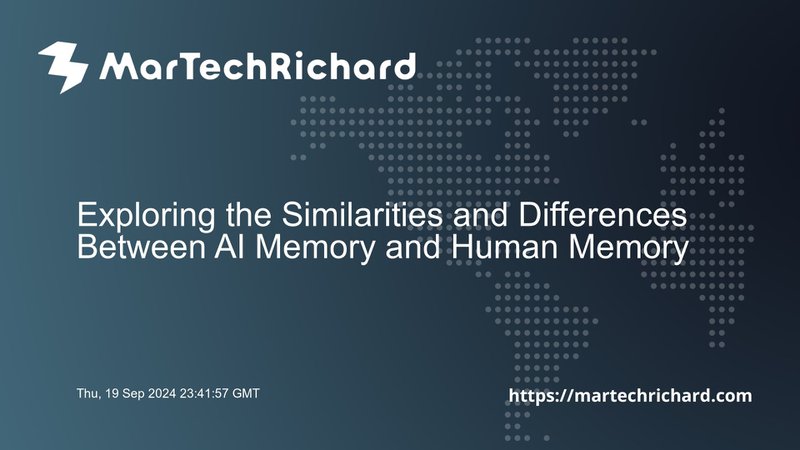
Do LLMs Remember Like the Human Mind?
The recent advancements in Large Language Models (LLMs) have sparked a fascinating debate: do these AI systems remember like the human mind? The article "Through the Uncanny Mirror: Do LLMs Remember Like the Human Mind?" delves into this intriguing question, exploring the similarities and differences between human and LLM memory.
Summary of the Article
The article begins by highlighting the remarkable capabilities of LLMs, which have been achieved through vast amounts of text data and a simple learning function—predicting the next word in a sequence. This is made possible by the Transformer architecture, which is now widely used for tasks such as translation, summarization, question answering, and article generation.
One of the key points discussed is that both human and LLM memory are diffuse. Unlike traditional computer memory, which is structured and organized in a linear fashion, human memory and LLMs store information in a more complex and interconnected manner. This makes it challenging to pinpoint exactly what is remembered or how it is retrieved.
The article also touches on the concept of attention as a crucial aspect of both human and LLM memory. Samuel Johnson's quote, "The true art of memory is the art of attention," underscores this idea. In LLMs, attention mechanisms allow them to focus on specific parts of the input data, much like how humans selectively attend to certain details.
Insights
- Memory Diffusion: The diffuse nature of both human and LLM memory suggests that these systems do not store information in discrete, easily accessible chunks. Instead, they rely on complex networks that allow for the retrieval of information based on context and relevance.
- Attention Mechanisms: The use of attention mechanisms in LLMs mimics human cognitive processes. By selectively focusing on certain parts of the input data, LLMs can process information more efficiently and accurately, much like how humans prioritize certain details over others.
- Limitations and Implications: While LLMs exhibit impressive memory capabilities, they are fundamentally different from human memory. For instance, LLMs lack the ability to form new connections or strengthen synaptic pathways as the human brain does. This difference has significant implications for how we integrate AI into our daily lives and how we design future AI systems.
Questions You May Have
- How do you think the diffuse nature of human and LLM memory impacts their respective abilities? This question encourages readers to reflect on the implications of diffuse memory in both humans and AI systems.
- What role does attention play in enhancing memory capabilities in both humans and LLMs? This prompt invites discussion on the importance of attention mechanisms in improving memory performance.
- How might the limitations of LLMs' memory capabilities influence their applications in real-world scenarios? This question sparks debate about the practical applications of LLMs and the potential challenges they face due to their memory limitations.
Have a Discussion
If you're interested in exploring more about AI and its applications, feel free to contact us via WhatsApp at go.martechrichard.com/whatsapp for further inquiry. Alternatively, you can reach out to us via LinkedIn message and subscribe to our LinkedIn page and newsletters at www.linkedin.com/company/martechrichard.
Source: Towards Data Science – Through the Uncanny Mirror: Do LLMs Remember Like the Human Mind?
